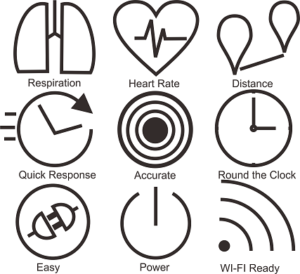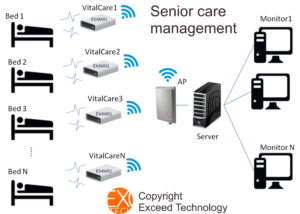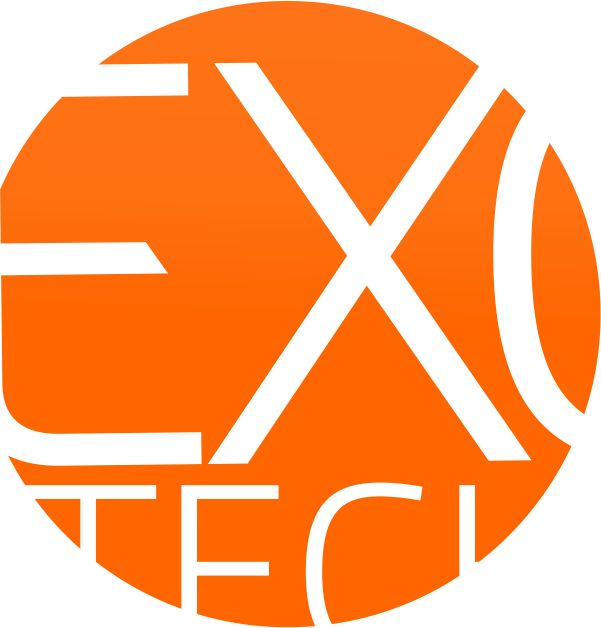Healthcare Technology
Technology Solutions
We design and manufacture high resolution sensors for personal wellness management. Our sensors contain advanced sensing technologies, which measure vital signs , heart rate, respiration rate etc. Our sensor systems are ready for use on compatible WiFi networks. The sensors will continuously stream measured results via WiFi. Users can now focus on developing the perfect user interface and data management services.
Heart Rate Sensor
Vital CARE is a non-contact sensor device which measures heart rate, respiration rate, of a target person. It analyzes micro movement and transmits the result over wireless network. The VitalCARE device has built-in power supply and WIFI communication. It is compact in size, simple to interface and easy to install.
Key Features
- True Non contact sensing, the person does not need to wear any tag, bend etc
- No discomfort, no awareness
- Simple installation, when mounted in ceiling, detection zone encompasses the whole bed area.
- Detection through clothing, blankets, etc
- 24/7 detection and measurement;
- Standard WIFI communication and control;


Sensor applications
- Senior home care : heart rate, respiration rate, presence in bed; etc
- Baby care : heart rate, respiration rate, presence in bed; etc
- Sleep analysis : respiration rate, heat rate analysis, distance information, and the movement states to accurately determine the stages of sleep
- Remote health monitoring applications: Big data analysis, long duration, uninterrupted heath status monitoring

Important Notice
- VitalCARE sensor is not designed for medical applications. It is a consumer grade product for general purpose usage.
- VitalCARE sensor cannot be used in placed of any medical equipment or processes.
- Readings and measurements from VitalCARE sensors are for guidance only.
- Typical applications are for reference purposes.
- VitalCARE sensor is responsible for data collection.
- End user applications should be developed to derive results and to drive events.
Creating high-quality products for healthcare use
The convergence of physical and digital worlds has shifted the paradigm of the manufacturing industry. Rapidly evolving technologies such as the internet of things (IoT), artificial intelligence (AI), robotics, and advanced computing are transforming how manufacturing are conducted. As the medical industry embraces Industry 4.0, most healthcare devices require more complex electronics in smaller dimensions and with more components. At the same time, guaranteeing high performance.
Medical electronics are subject to rigorous regulatory oversight to ensure the highest quality standards and reliability. The most common medical electronic manufacturing standards include:
- ISO 14971:2007: Application of risk management to medical devices, this standard outlines the due process for medical electronic manufacturers to detect any hazard in medical devices.
- ICH Q9 – International Conference on Harmonization of Technical Requirements for registration of pharmaceutical for Human Use: Guideline for risk management applied to different aspects of pharmaceutical quality.
- ISO 13485: 2016: Medical Devices - Quality Management Systems - Requirements for regulatory purposes
- IEC 60601-1: Technical standards applicable to Medical Electrical Equipment & Medical Electrical System for Basic Safety & Essential Performance.
- IEC 61010-1: Standard safety guidelines for electrical equipment and related components.
- 21 CFR Part 820: Quality System Regulation - part of the Current Good Manufacturing Practice (CGMP) regulations. It ensures that all medical devices created and developed within the US market are safe and follow satisfactory quality processes at all stages of development.
Manufactures must ensure compliance, but not limited, with these standards to ensure high-quality, reliable products for healthcare use.
